The camera, the most elaborate 35mm manual focus SLR film camera produced by Pentax, is the first iteration and top model of the Pentax A series SLR cameras and was sold in tandem with the new SMC Pentax-A series lenses.
When used with SMC Pentax-A lenses, the camera offers a combination of up to six exposure modes to cater to the genre you are shooting in.
The range includes P (Programmed AE), Av (Aperture-priority AE), Tv (Shutter-priority AE), M (Metered Manual), and compatible flash units, TTL Auto Flash, and Programmed Auto Flash modes.
Just like what you find on the Pentax ME and Pentax ME Super, the shutter speed is controlled by push buttons located on the top panel of the camera, while the aperture opening of the lens is controlled via the aperture ring on the lens. Both of these need to be set to Auto to bring the camera into Program mode. For backward compatibility, the camera can use older M and K lenses in Av and M exposure modes.
Pentax Super Program
Pentax Super Program 35mm SLR body with Pentax-A 50mm 1:1.7 lens
Mechanically, the Super Program comes fitted with a Seiko MFC-E3 metal vertical run focal plane shutter with an electronically controlled speed range from 15 to 1/2000 second, a mechanical setting of 1/125 second for flash sync., and B. Metering range is from EV 1 (F1.4, 1 sec.) to EV 19 (F16, 1/2000 sec. or F22, 1/1000 sec.) with 50mm F1.4 lens and ISO 100 film.
Film ISO speed range is 6-3200, Exposure Compensation at 4X, 2X, 1X, 1/2X, and 1/4X. The camera is also fitted with a DoF (Depth of Field) preview lever, and an electronically controlled 12-second delay self-timer activated by the shutter release button.
Basic Camera Features
The Pentax 'A-series' cameras were also the first cameras from Pentax to use LCD digital displays for exposure information. These digital display panels are located within the viewfinder window. As a feature to conserve battery power, the panels are backlit by illumination from a white translucent window located on the front of the pentaprism housing. Both the Super Program (Super A) and Program Plus (Program A) come fitted with this feature.A simple and uncluttered front populated by the sculptured finger grip and the raised lens mount housing that continues up to the pentaprism head as the main features, with a cluster of features including the lens release button, DoF preview lever, and the self-timer switch located within the space between the finger grip and the vertical of the lens mount housing, and the LCD illuminator switch, and X-sync terminal on the lower right of the lens housing mount vertical.
The top panel, where most of the functional controls of the camera are located, is first populated by the integrated rewind crank, pull-up film back latch release, pull-up and turn film ISO speed indicator, and exposure compensation dial located on the top left of the camera body. Next is the pentaprism, hot shoe, and viewfinder eyepiece hump, and on the top right of the body, the cluster of shutter speed selector push-buttons, shutter speed, shutter lock dial, shutter release button, external LCD panel, film forward crank, and film counter window.
A plain back, with just the viewfinder eyepiece and the film travel indicator window on the back of the camera's top panel, with the hinged film back with the finger-grip-memo-holder fitment occupying the rest of the film back.
On the bottom plane, from left to right, are the motor drive coupling gear, motor drive alignment contact, rewind release button, tripod socket, battery chamber cover, and motor drive electrical contacts.
The film box is a standard configuration as seen on most SLR film cameras of that era, with the film canister chamber on the left end of the body, followed by the shutter window, sprocket gear, and multi-pin take-up spool on the opposite end of the film box.
Film Loading and Rewinding
Film loading on the Pentax Super Program is the standard manual procedure of opening the film back, placing the film canister into the canister chamber, pulling the film tab across the film box, and inserting the film tab end into one of the magic needle slots, and tensioning it towards the inner side of the take-up spool. The film is wound emulsion side up.To rewind, press the film rewind release button located on the bottom plane of the camera, and turn the film rewind crank in the clockwise direction until the film is completely rewound before taking the film canister out and sending it for processing.
Viewfinder Readout
In Programmed AE mode, the shutter speed and lens aperture setting are displayed on the pair of LCD displays aligned below the image field.
The LCD display will vary according to the exposure mode the camera was set to, and other information such as 'over' and 'underexposure warning and values, low battery indicator, and erroneous operations, which will, in tandem, disable shutter release.
Exposure Modes
Setting the Pentax Super Program for its various exposure modes is a fairly straightforward process through these easy steps:- Programmed AE - Set both the shutter speed dial and the lens aperture setting to 'Auto'.
- Aperture-priority AE - Set the shutter speed dial to 'Auto' and set the aperture ring manually. The shutter speed will be adjusted automatically by the camera.
- Shutter-priority AE - Set the lens aperture to 'A', the shutter speed dial to 'M', and set the shutter speed manually using the shutter-speed push buttons. The lens aperture opening will be automatically controlled by the camera.
- Metered Manual - You are free to adjust both the lens aperture opening and the shutter speed of the camera. In this mode, you might also want to consider Exposure Compensation as part of your creative content.
- TTL Autoflash - This mode requires the use of a dedicated TTL Auto Flash unit. Set the camera to Aperture-priority AE (Shutter Speed on Auto) and set the lens aperture to your own discretion for better control over the image.
- Programmed Auto Flash - Use a Pentax dedicated flash unit, set the camera for Programmed AE mode, and the camera will adjust exposures automatically.
Batteries and Camera Body Weight
The Pentax Super Program requires the use of a pair of LR/SR44 button cells to power its electronics. A low battery warning is indicated by an alternate display of 'exposure setting' and '000' on the LCD panels. The camera will not power up when the batteries are depleted.The Pentax Super Program camera's body weight is 490 grams without batteries.
Instruction Manual
The instruction manual for the Pentax Super Program is available from buktus.org (donations accepted).In Use
Much like other competitive Programmed AE SLR film cameras of the 80s such as the Minolta X-700, Canon AE-1 Program, Nikon F4, ...) the delight of using the Pentax Super program belies on its elegant and compact design, robust construction, neat and essential features like automatic exposure modes, depth of field preview, a backlighted viewfinder when you need one, superb brand name lenses, lens compatibility, and the list just goes on and on.The Super Program, with its rather diminutive finger grips, feels great in the hands, easy and comfortable to use. With the 50mm F1.4 SMC Pentax-A lens attached and batteries fitted, the camera now weighs 730 grams. The added advantage of this simple setup, taking into account the compatibility of Pentax K-mount lenses across the board, is that you might even be using the same lens on your Pentax DSLR as well.
As a fairly late model camera with advanced design features, the Super Program is all decked out with all the functionalities of a much newer camera, and may even come closer to that of the DSLR you are using, while retaining its charm and posture as an old-school classic. Highly recommended!


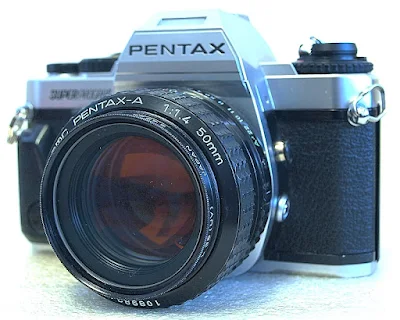


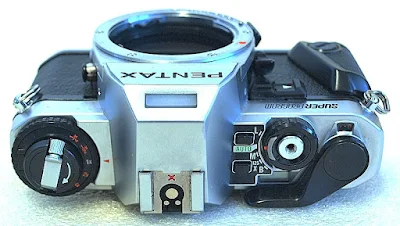



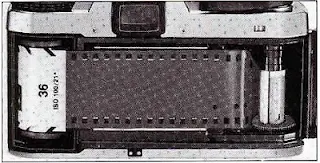
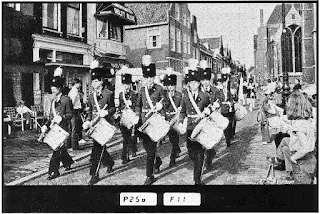
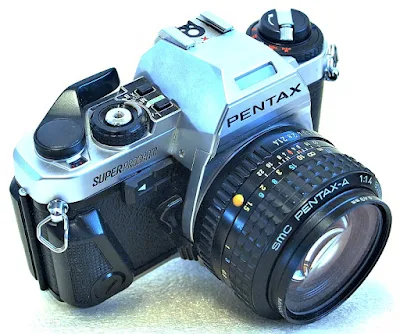









No comments:
Post a Comment